Emily Lakdawalla • Oct 15, 2014
Finally! New Horizons has a second target
What a huge relief: there is finally a place for New Horizons to visit beyond Pluto. A team of researchers led by John Spencer has discovered three possible targets, all in the Cold Classical part of the Kuiper belt. New Horizons will most likely visit one named "PT1" for "[New Horizons] potential target 1." PT1 has been imaged four more times by Hubble since its discovery, and those followup images have provided enough information on its orbit for four independently working teams to determine that New Horizons will be able to fly close past it in January 2019. It is probably about 30-45 kilometers in diameter and is easily reachable with New Horizons' limited fuel budget; targeting it will require only about 35% of the spacecraft's remaining fuel. New Horizons will have to fly an additional billion kilometers beyond Pluto in order to reach it where it orbits 43.4 AU away from the Sun.
This discovery has been a long time in coming. New Horizons launched toward Pluto in 2006, with plans for a further flyby of a second, likely much smaller Kuiper belt object. The Kuiper belt phase of the mission will turn New Horizons from a single flyby mission into a Kuiper belt tour. The only catch: the second target had not been discovered yet. Based on the current understanding of the population of the Kuiper belt, the New Horizons team expected that a focused survey with large telescopes would yield one or a few objects within New Horizons' reach. Unfortunately, what years of ground-based surveys actually yielded was the unpleasant discovery that our prior understanding of the Kuiper belt population was wrong. There were fewer small objects than predicted, and no reachable object was discovered. This summer, a desperate New Horizons team argued for, and won, the opportunity to use the Hubble Space Telescope to search. I wrote about the Hubble search for a New Horizons Kuiper belt target at length back in June.
Hubble has rescued the New Horizons Kuiper belt mission. In fact, PT1 was discovered during the pilot program, the small initial survey designed to validate the larger search, in pictures taken just a week after the search began. The whole search turned up a total of five potential targets; two have been ruled out. PT1 is certainly targetable, while PT2 and PT3 are potentially targetable.
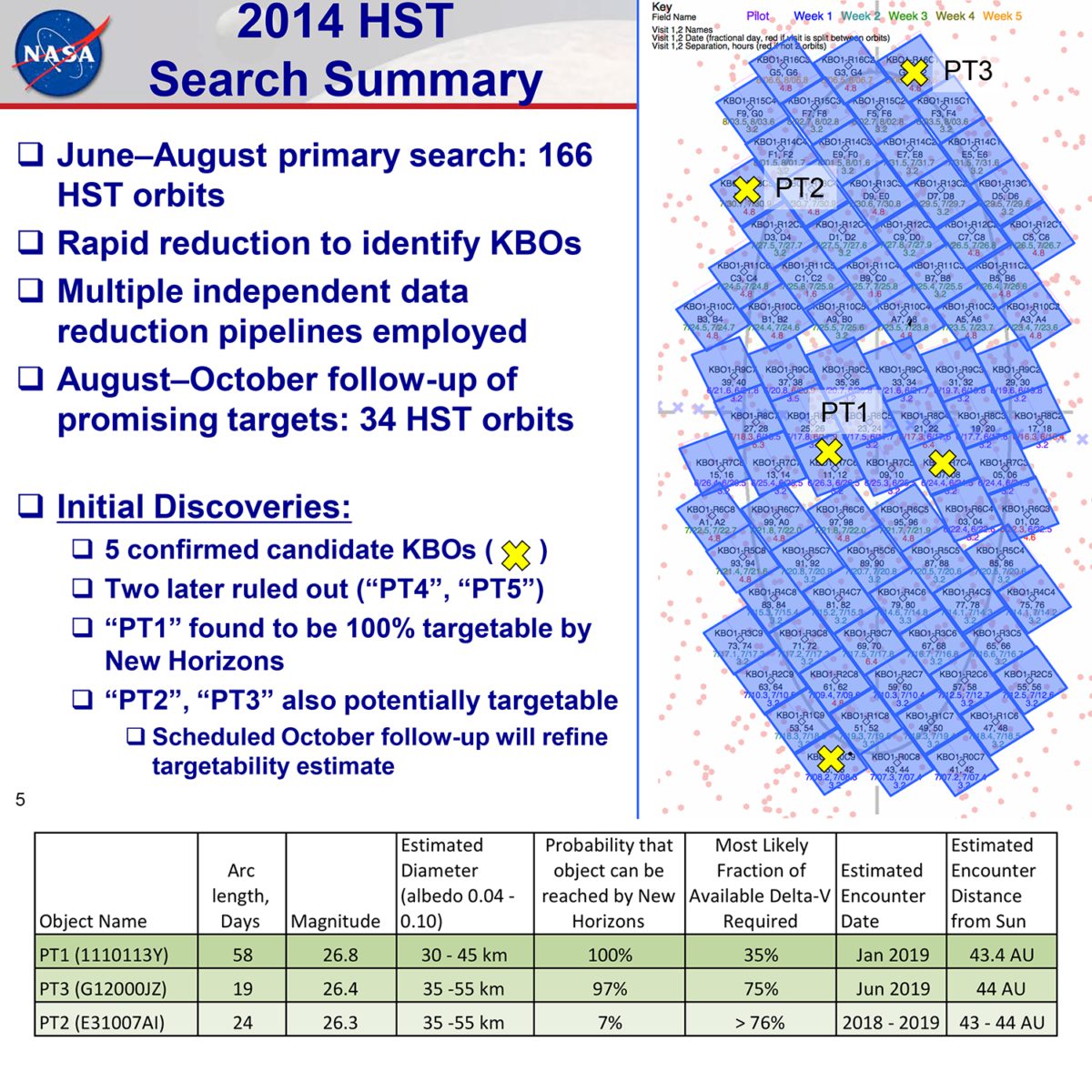
It was a huge team effort, John Spencer told me. He said "Marc Buie led the data reduction effort, and was the first to find nearly all our Kuiper belt objects. Alex Parker was also a key player, working on predicted orbits that allowed us to stack the data correctly and on orbit determination - it was he who first determined that one of our objects was 100% targetable. Larry Wasserman and Yanping Guo helped us to confirm targetability. Hal Weaver played a huge role in the proposal and in the observation design, and Alan Stern was of course closely involved in all stages of the work. Simon Porter, Amanda Zangari, Anne Verbiscer, Susan Benecchi, Ray Sterner, and Dave Borncamp put a lot of effort into searching the data, and JJ Kavelaars, Keith Noll, Mark Showalter, Jean-Marc Petit, Cesar Fuentes, Dave Tholen, and Mike Belton contributed to the proposal and general strategizing."
PT1 was discovered on June 27 -- just 11 days after the search team was awarded time on Hubble -- in a photo taken by Hubble on June 26. Its existence was flagged by an automated processing pipeline and confirmed by eye by Marc Buie the same day. I asked Alan Stern who would get the discovery credit, and he said it would go to the entire team.
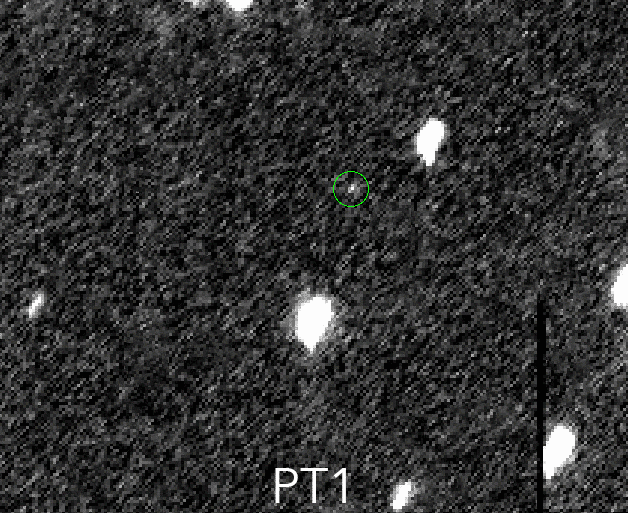
Hubble took followup photos on August 2, 3, 21, and 23 to determine its orbit, and on August 22 Alex Parker determined that the object was targetable by New Horizons. Since then, four independent analyses have confirmed it's within New Horizons' reach. It's a lot of data to sift through; so far, Hubble has acquired 830 images with its Wide Field Camera 3 in its search pattern, plus 100 more follow-up photos of all the objects discovered so far. And it's not easy to spot the faint objects they are looking for. The images contain a million stars that are brighter than PT1.
How close will New Horizons get? Initially, Alex told me, they couldn't entirely rule out the possibility that New Horizons would impact it. The likelihood of that was vanishingly tiny, of course, and after taking the followup images the uncertainty in PT1's position decreased to the point that New Horizons' path no longer intersected the range of the object's possible future positions. But the proximity means that the New Horizons team will be able to choose arbitrarily how close they want to fly to the object, limited by the uncertainty in their understanding of its orbital path. Picking that distance will require balancing the desire to get high-resolution observations with engineering constraints like how fast the spacecraft can rotate at closest approach to target the object. If the object is 30 kilometers in diameter, New Horizons' highest resolution camera, LORRI, would get 100 pixels across it at a range of 60,000 kilometers, or 1000 pixels across it at a range of 6000 kilometers. They will target the object in a burn well after the Pluto encounter, between October and December of 2015.
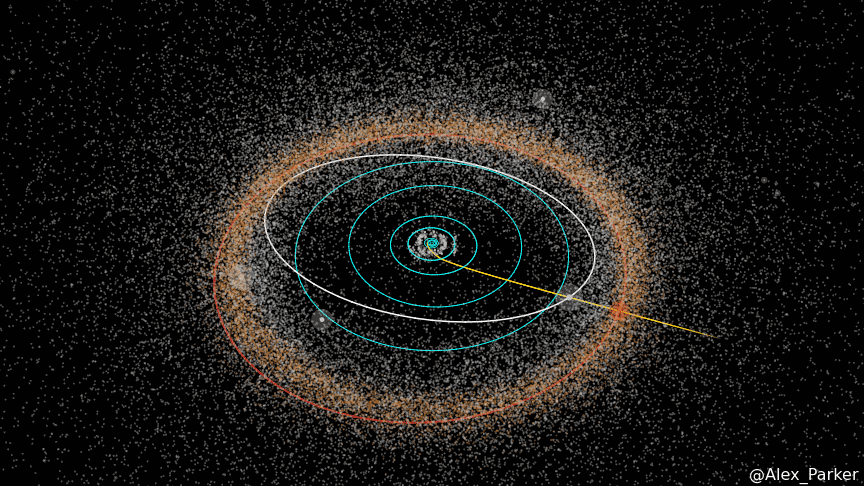
The object does not yet have a formal name; it is called "1110113Y" on the Hubble website and "PT1" within the New Horizons team. Another numerical designation will come after the object is submitted to the Minor Planet Center, which the search team says it will do after they perform followup observations with Hubble in October to pin down the astrometry more precisely. Eventually, it will get a provisional name (2014 followed by some letters and numbers) from the Minor Planet Center. Hopefully it will get a formal name before January 2019, which is when New Horizons will fly past it.
Although PT1 is the most likely of the Hubble-discovered objects to be targeted, it's possible that followup observations may make PT2 or PT3 more desirable. PT2 and PT3 are both slightly brighter than PT1 and are therefore probably larger. Unfortunately, it's not possible to target two of these objects within New Horizons' fuel budget; they must select one.
What do we know about PT1 so far? Its orbit is circular and close to the plane of the ecliptic, so it is a Cold Classical Kuiper belt object, meaning that it has had a very different history from Pluto. Pluto is a member of a population of objects in the Kuiper belt whose orbits were changed as Neptune migrated outward, scattering them. Pluto now has an inclined and elliptical orbit that is locked in a resonance with Neptune, such that Pluto orbits the Sun twice for every three times Neptune does. In contrast, Cold Classical objects were probably never tossed around in this way. So PT1 could be very pristine, a cold, never-heated relic of solar system formation. On the other hand, it's very small, estimated to be 30 to 45 kilometers in diameter, and scientists think that most objects of that size are not primordial, but are actually fragments from collisions of larger objects, which would make it less pristine. No matter what, its size and orbital position mean that it will look very, very different from Pluto.
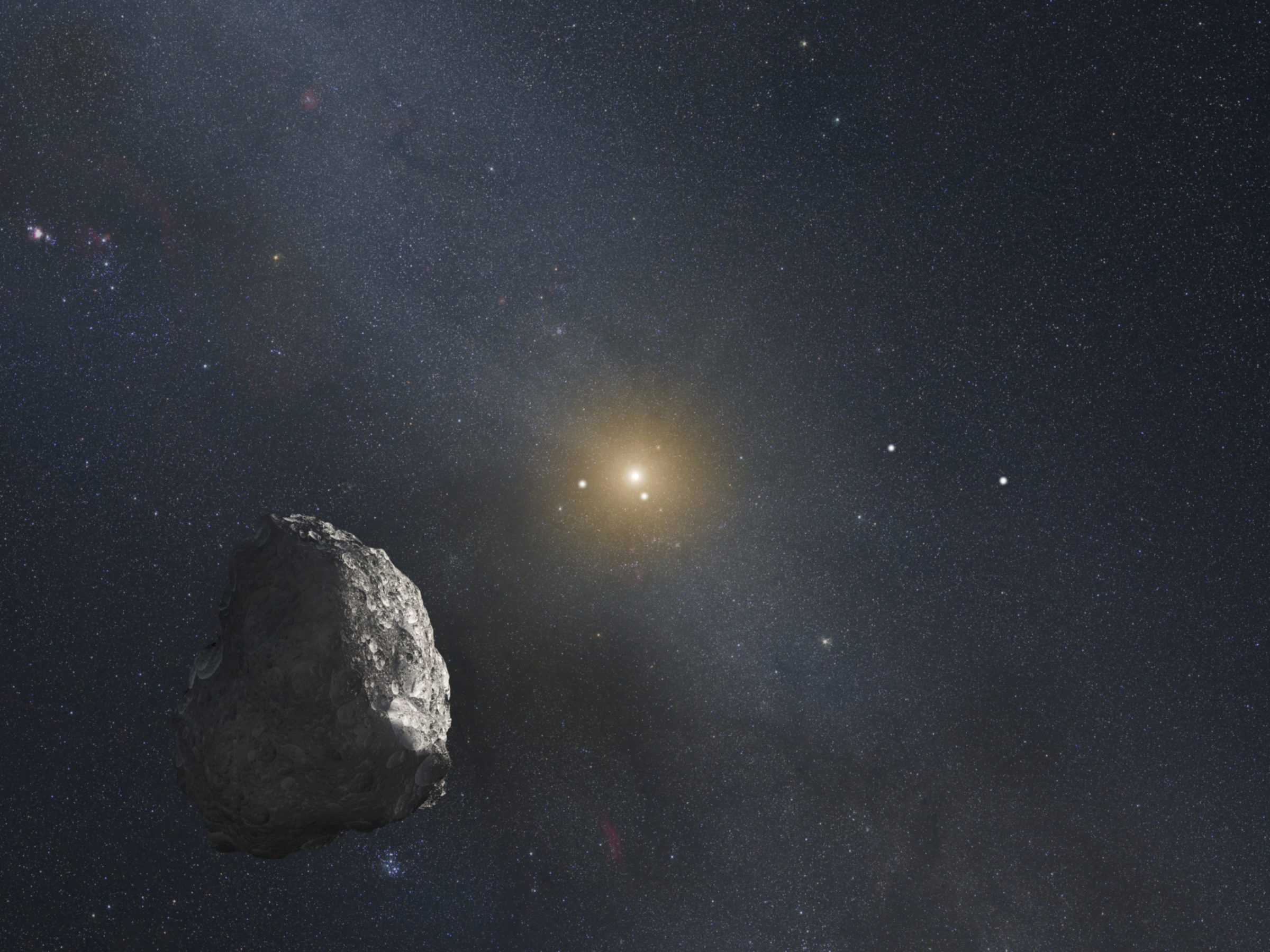
What will it look like? We don't know. Here is a similar-sized world, Saturn's moon Helene, which is about 36 by 32 by 30 kilometers in diameter. But Helene is likely not a good analog, because its surface is affected by the large amount of dust wandering around the Saturnian system.
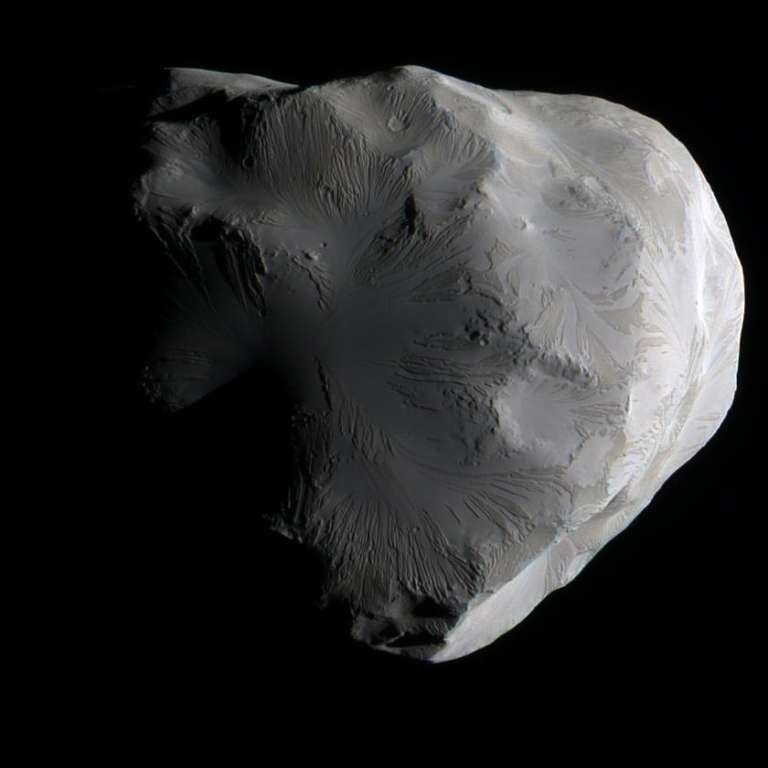
Here's another similar-sized world, Ida, which is 56 by 24 by 21 kilometers in diameter. Ida is probably a collisional fragment. But it's made mostly of rock, not like the icier Kuiper belt objects. So it's probably not a good analog either. We do know that a large fraction of Kuiper belt objects have satellites; it's certainly possible that PT1 does.
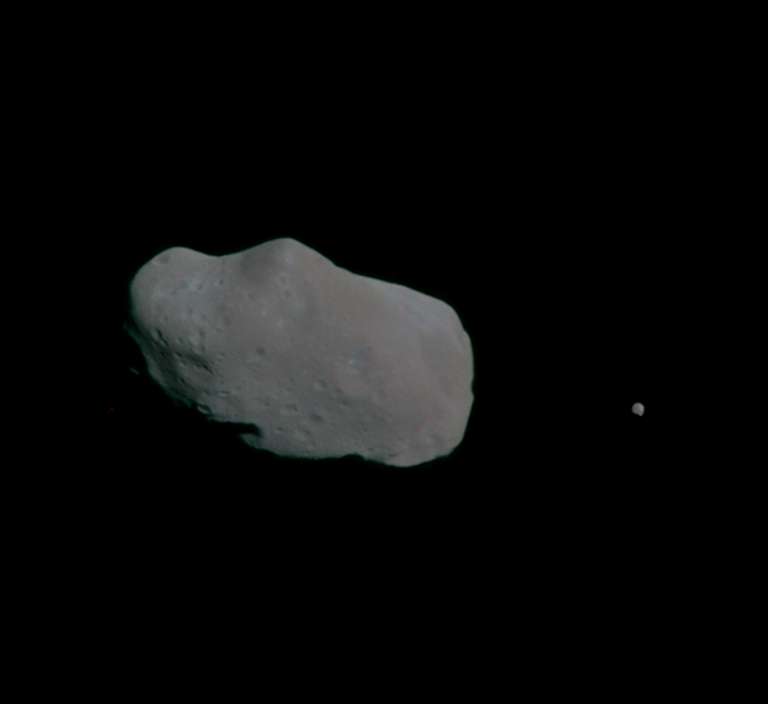
But there's no reason to expect that PT1 will look like neither of these. Just like Pluto and Charon, PT1 is a world the likes of which we've never visited before. We'll have to wait until 2019 to find out what a small cold classical Kuiper belt object looks like!
Support our core enterprises
Your support powers our mission to explore worlds, find life, and defend Earth. You make all the difference when you make a gift. Give today!
Donate

 Explore Worlds
Explore Worlds Find Life
Find Life Defend Earth
Defend Earth


